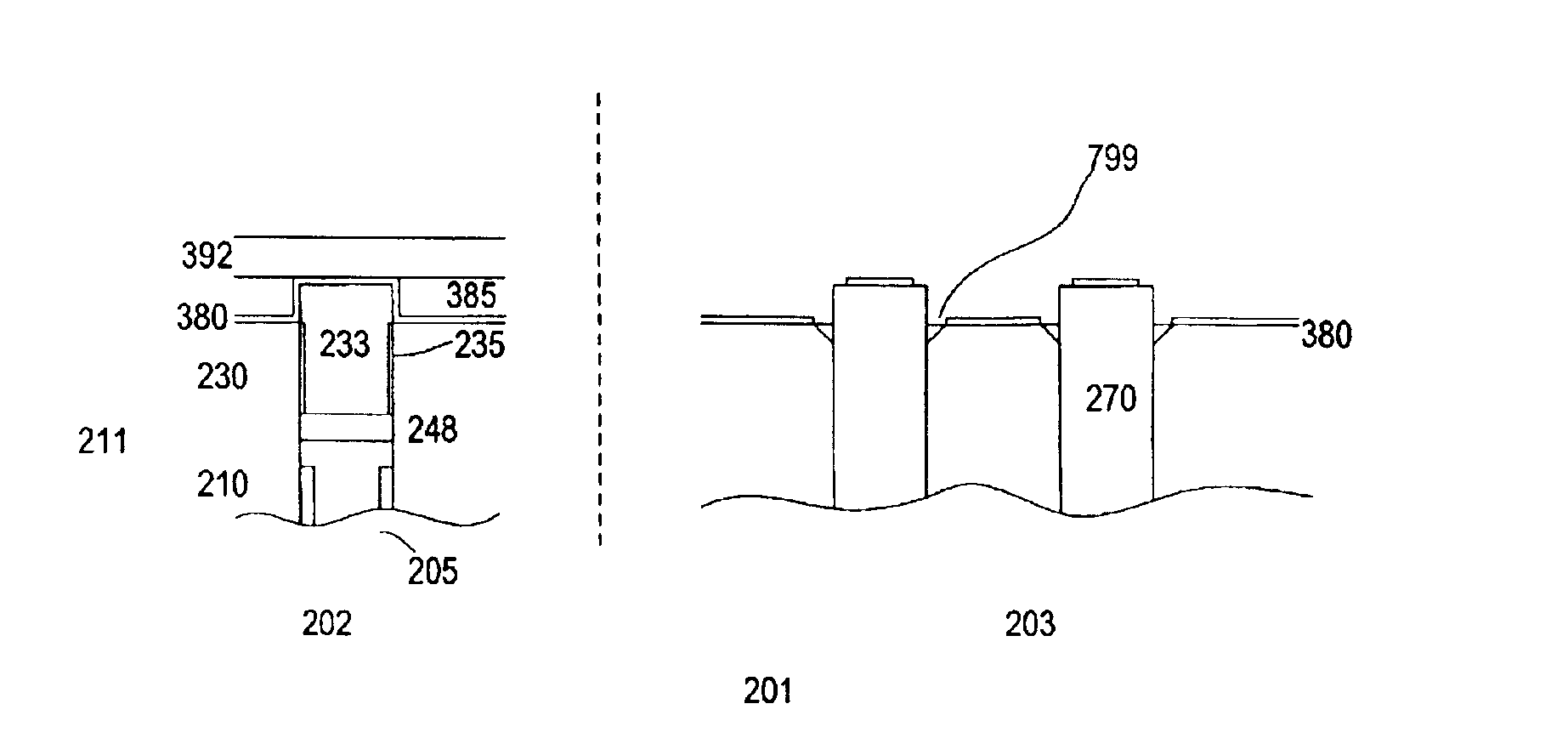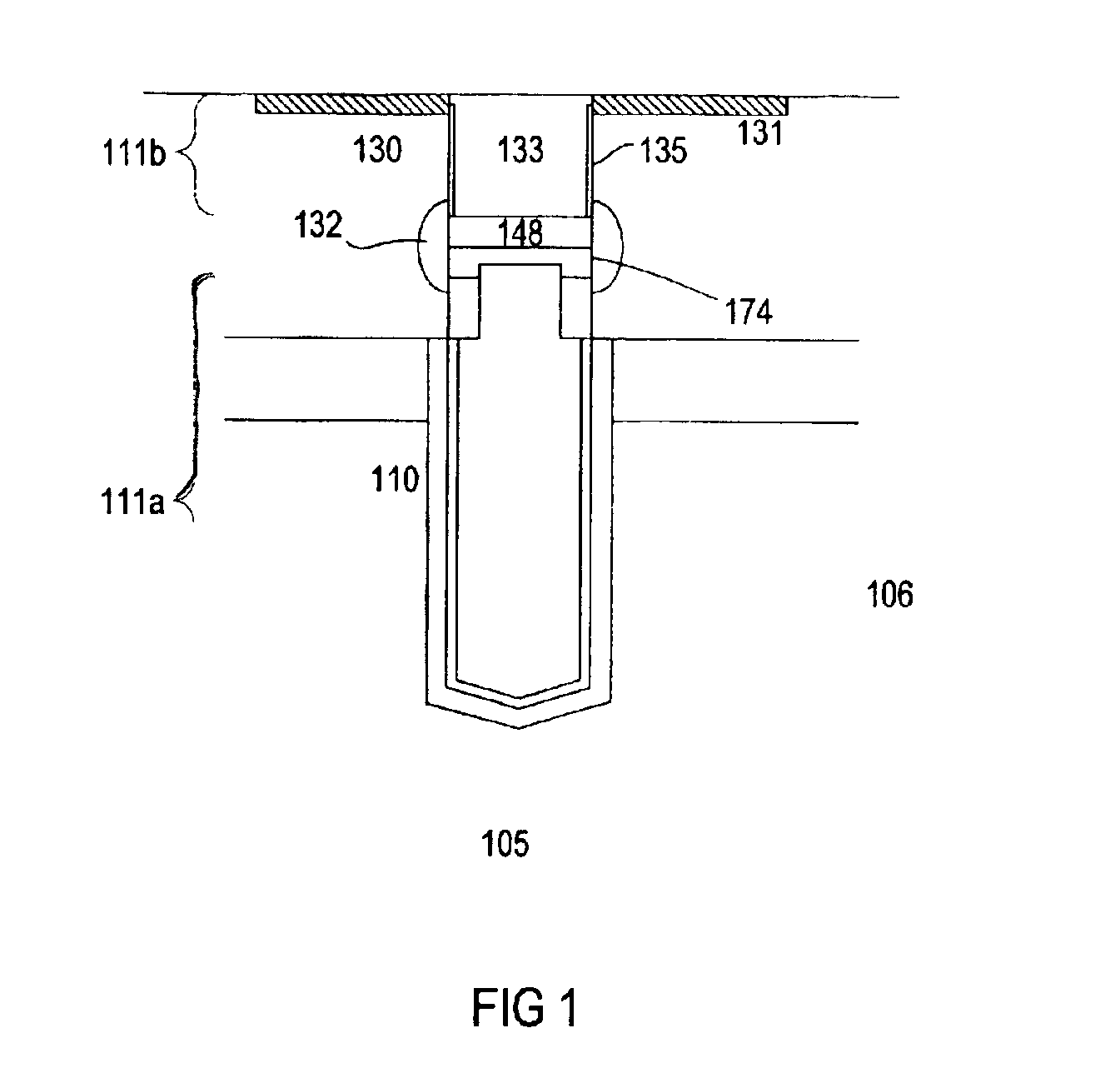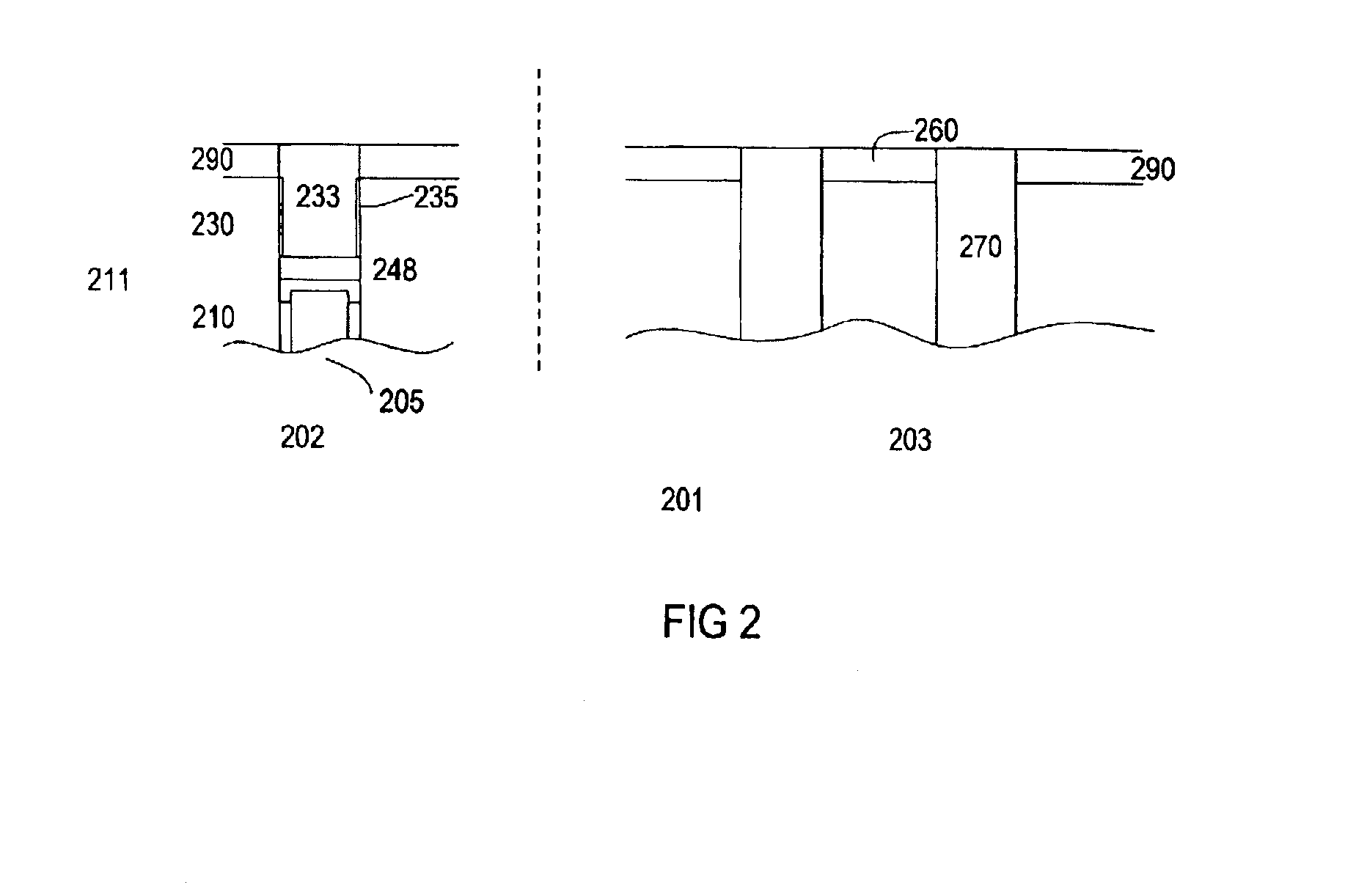Process integration for integrated circuits
a technology of integrated circuits and integrated circuits, applied in the direction of basic electric elements, electrical apparatus, semiconductor devices, etc., can solve the problems of insufficient active area corner rounding of support devices, performance degradation of support devices, and different circuit requirements of memory cells and support circuitry
- Summary
- Abstract
- Description
- Claims
- Application Information
AI Technical Summary
Benefits of technology
Problems solved by technology
Method used
Image
Examples
Embodiment Construction
[0008]The invention relates to the fabrication of ICs with memory cells. The ICs, for example, are memory ICs. Other types of ICs, such as system on chip, are also useful. In one embodiment, the invention relates to the fabrication of memory cells having a trench capacitor coupled to a vertical transistor. Preferably, the memory cells are formed without compromising performance by sacrificing the needs of support devices. More preferably, the active areas in the support region are provided with sufficient corner rounding.
[0009]Typically, in IC fabrication, a plurality of ICs are formed on the wafer in parallel. After processing is finished, the wafer is diced to separate the ICs into individual chips. The chips are then packaged, resulting in a final product that is used in, for example, consumer products such as computer systems, cellular phones, digital cameras, personal digital assistants (PDAs), and other products.
[0010]FIGS. 2-8 show a process for forming an IC in accordance wi...
PUM
 Login to View More
Login to View More Abstract
Description
Claims
Application Information
 Login to View More
Login to View More - R&D
- Intellectual Property
- Life Sciences
- Materials
- Tech Scout
- Unparalleled Data Quality
- Higher Quality Content
- 60% Fewer Hallucinations
Browse by: Latest US Patents, China's latest patents, Technical Efficacy Thesaurus, Application Domain, Technology Topic, Popular Technical Reports.
© 2025 PatSnap. All rights reserved.Legal|Privacy policy|Modern Slavery Act Transparency Statement|Sitemap|About US| Contact US: help@patsnap.com



